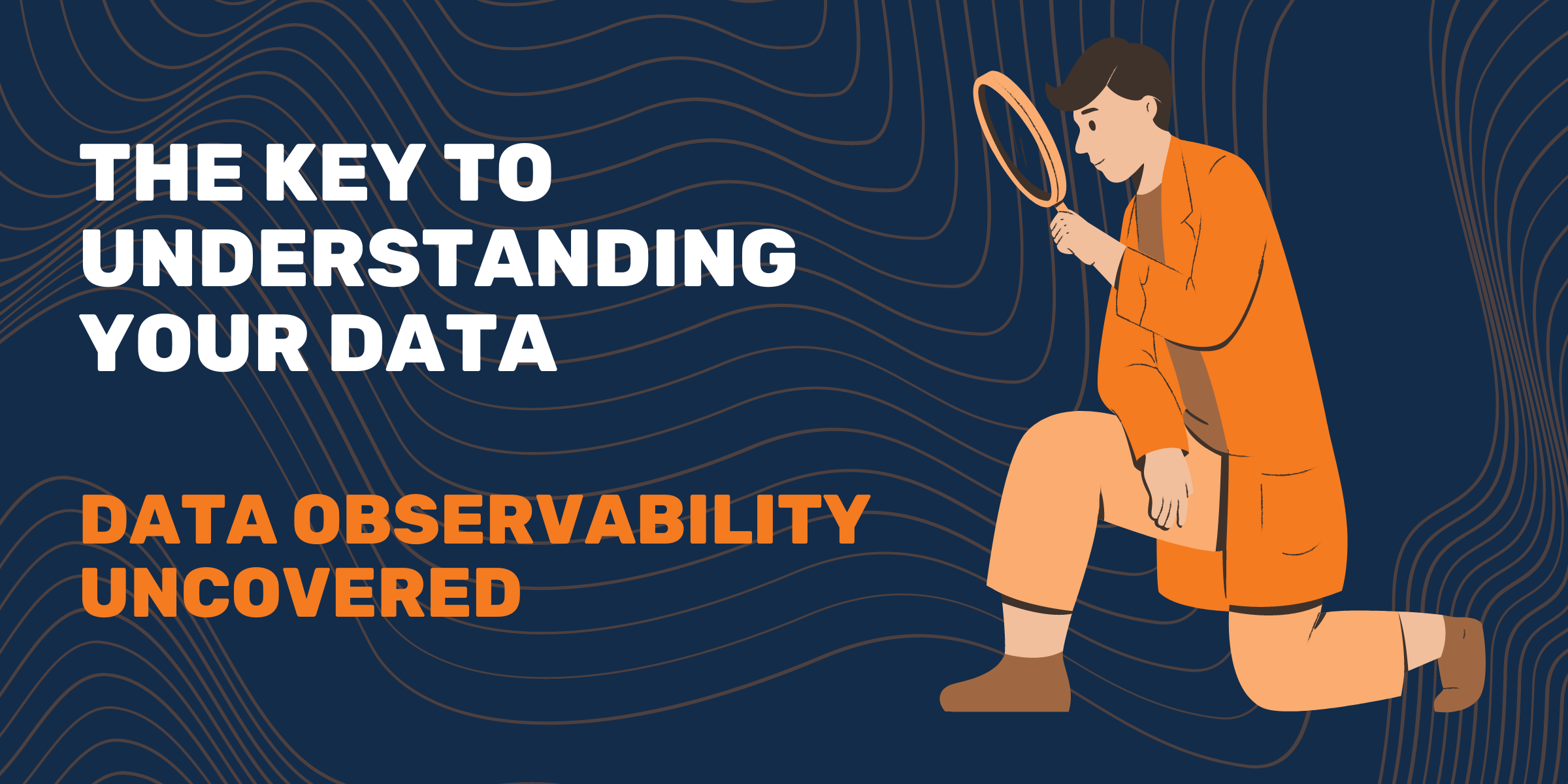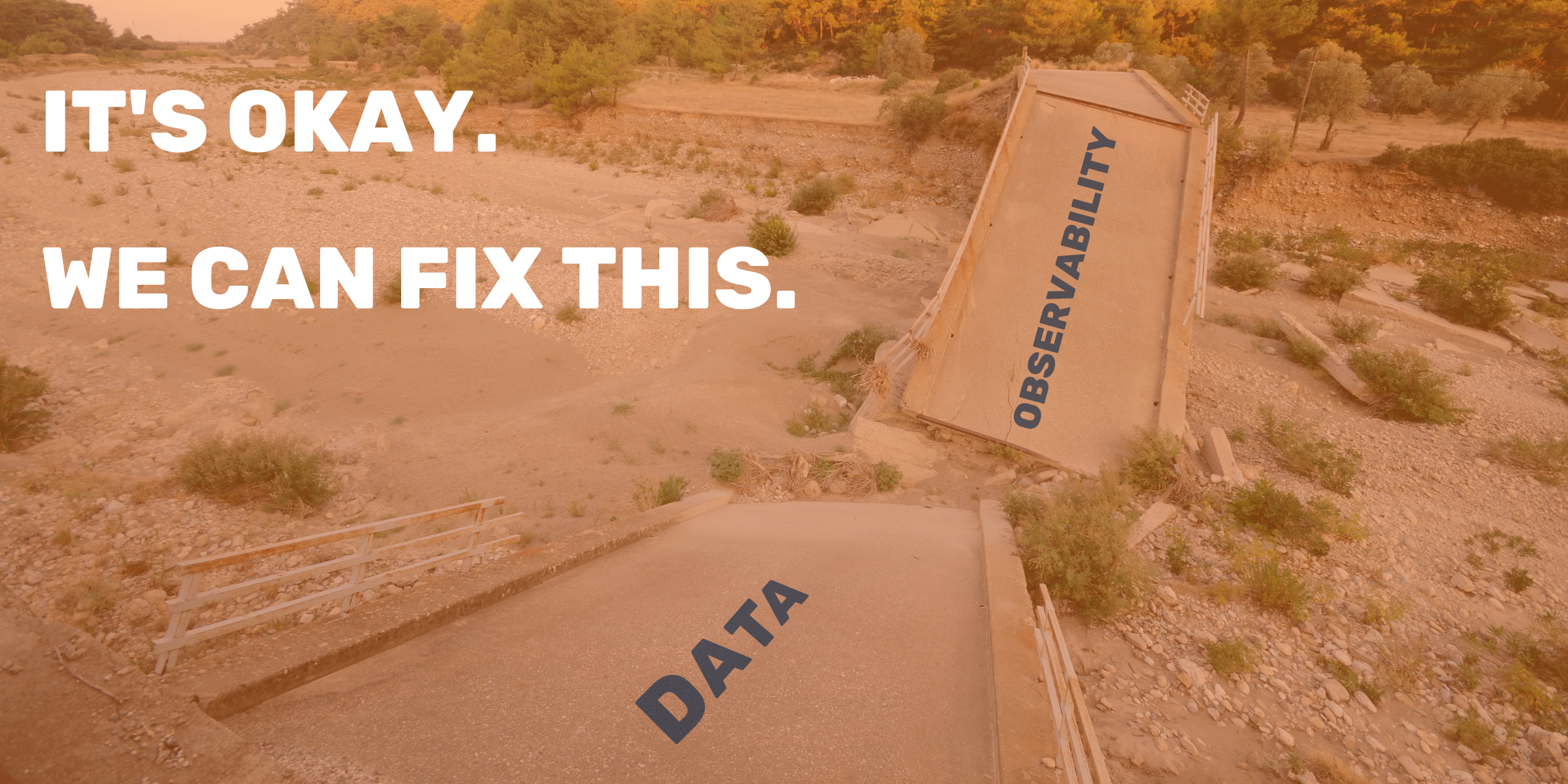5 min read
The Key to Understanding Your Data: Data Observability Uncovered
Written by: TimeXtender - July 21, 2023

If you're a data professional, you're probably no stranger to the critical role data plays in today's technology-driven world. But as we all know, with great data comes great responsibility (our Uncle Ben told us that). Our responsibility lies not just in managing and manipulating data, but in ensuring its quality, reliability, and availability. This is where the concept of Data Observability enters the picture.
What Is Data Observability?
Data Observability is a concept that's been gaining traction among data engineers and professionals across the globe. The core idea behind Data Observability is the ability to comprehend fully the health of your data within your systems. This isn't just about knowing what data you have, but understanding the quality, reliability, and lineage of this data.
Imagine driving a car without a dashboard. You wouldn't know how fast you're going, how much fuel you have left, or even if your engine’s about to overheat. That's what it's like to manage data without observability – you’re driving blind. Data observability is like having a well-equipped dashboard for your data, helping you navigate the complex data landscape.
The Five Pillars of Data Observability
Just like the sturdy pillars that hold up a bridge, Data Observability stands on five key components: freshness, distribution, volume, schema, and lineage. These components work together to provide comprehensive insight into your data's quality and reliability:
- Freshness refers to how up to date your data tables are and the frequency of updates. It's akin to checking the expiration date on your food items. No one wants stale or moldy data, right?
- Distribution is about understanding if your data falls within an acceptable range. It's like knowing if the temperature of your home is within a comfortable range. Too hot or too cold, and you know something's not right (or if the kids have been messing with the thermostat).
- Volume gives insights on the completeness of your data tables. Imagine you're expecting a full shipment of items, but only receive a fraction. That's a problem, right? The same applies to data.
- Schema involves monitoring changes in the organization of your data. If the schema changes abruptly, it could be a sign of an issue, like a broken piece of machinery in a production line.
- Lineage tells you the origin of your data and its journey through your systems. It's like tracking a package from dispatch to delivery.

Why Does Data Observability Matter?
In an increasingly data-driven world, the complexity of data systems is growing. We've moved from monolithic architectures to distributed, microservice-oriented designs. Data isn't just sitting in one place anymore; it's distributed across multiple systems and platforms. This complexity makes it challenging to maintain a holistic view of your data, leading to issues like data downtime – periods when your data is inaccurate, missing, or erroneous.
Data downtime doesn't just mean wasted resources; it erodes confidence in decision making. After all, if you can't trust your data, how can you trust the decisions based on it? This is where Data Observability shines. By applying the best practices of DevOps Observability to data pipelines, it allows you to identify and evaluate data quality and discoverability issues swiftly, leading to healthier pipelines, more productive teams, and more confident decision-making.
Observability: A New Standard for Data Management?
The role of Data Observability in modern data management is becoming more apparent as organizations strive to make data-driven decisions. However, some critics argue that the complexity of dynamic, multi-cloud environments presents challenges that Data Observability might struggle to address. Data and alert volume, velocity, and variety can create alert fatigue, making it difficult to discern meaningful signals from the noise.
While these concerns are valid, the continuous evolution and sophistication of Data Observability tools and techniques have allowed organizations to overcome many of these challenges.
Here are some counterarguments that challenge the notion that data observability is the future of data management:
- Data Privacy and Security: When it comes to data observability, there's a need to strike a balance between accessibility and privacy. As you increase the amount of data observed and shared within an organization, you also increase the risk of exposing sensitive data. There might be challenges in ensuring that only the right people have access to the right data, maintaining user privacy, and meeting regulatory compliance requirements such as GDPR and CCPA. Furthermore, more data observability can mean a larger attack surface for potential cyber threats, which can lead to significant security challenges.
-
Complex Implementation: Data observability is not a plug-and-play solution. It requires an organization-wide effort for proper implementation and use. For example, data observability won't work with data silos, so there needs to be an effort to integrate all the systems across the organization, which may require all data sources to abide by the same standards. This can be a complex task, especially in larger organizations or those with legacy systems that are not designed for this level of integration1.
- Need for Skilled Team: Data observability requires a skilled team to get the maximum value from it. Organizations need to dedicate resources that have the capacity, experience, and skills to observe the data. Several data observability tools provided by various companies can help, but it will eventually be the responsibility of the data engineers to interpret the information, make decisions, and determine the root cause of any data-related issues. Recruiting and retaining such talent can be challenging and expensive, particularly in the competitive tech industry1.
- Automation Challenges: While there has been significant progress in using machine learning and artificial intelligence to automate some of the data observer roles and responsibilities, there is still a long way to go before data observability can be fully automated. This means that for now, a significant human input is still required, which can be time-consuming and costly1.
- Data Overload: With the vast amounts of data being generated today, data observability can potentially lead to data overload, where the sheer volume of data becomes overwhelming and difficult to manage. This can make it hard to separate the signal from the noise and identify the most important insights.
While these challenges do not negate the potential benefits of data observability, they do highlight the complexities and considerations that organizations need to address when implementing such strategies. It's also worth noting that the future of data management will likely involve a combination of approaches, with data observability being one key aspect among many.
The Future of Data Observability
Significant progress has been made in using machine learning and artificial intelligence to automate some of the data observability roles and responsibilities. While there is still a long way to go before Data Observability can be fully automated, these advancements are paving the way for more efficient and effective data observability practices.
Furthermore, the advancements in data quality management and anomaly detection techniques have improved the effectiveness of Data Observability in identifying meaningful signals amidst the noise. With the integration of statistical models, machine learning algorithms, and pattern recognition, organizations can detect and flag anomalies, outliers, and data inconsistencies in real-time. This capability enables proactive data issue resolution, reducing the impact on downstream analytics and decision-making processes.
Summary
Data Observability is a key aspect of maintaining the health of your data and ensuring its reliability. It's a complex, yet necessary practice that involves various aspects such as freshness, distribution, volume, schema, and lineage. While there are challenges involved, the benefits that Data Observability brings to decision-making and data reliability make it an essential practice in today's data-driven world1.
- Data Observability is gaining traction among data professionals, as it focuses on understanding the health of data within systems.
- The five pillars of Data Observability are freshness, distribution, volume, schema, and lineage, which provide comprehensive insight into data quality and reliability.
- Data Observability is important due to the complexity of data systems and the need for accurate, reliable data for decision-making.
- Data downtime can erode confidence in decision-making, and Data Observability helps identify and address data quality and discoverability issues swiftly.
- Critics argue that Data Observability faces challenges such as data privacy and security, complex implementation, the need for skilled teams, automation challenges, and data overload.
- Progress has been made in automating data observability roles and responsibilities using machine learning and AI, improving efficiency and effectiveness.
- Advancements in data quality management and anomaly detection techniques enhance Data Observability's ability to identify meaningful signals and resolve data issues proactively.
Data Observability is definitely the new buzzword in the data world. There will be a delicate balance to be struck between accessibility and privacy, the process of implementing it across your organization's systems, the need for a skilled team to interpret the information, and more, but don’t let those challenges discourage you. The result can be better data health, which is good for everyone. Good luck, brave data professionals!
1. https://www.techrepublic.com/article/what-is-data-observability/





